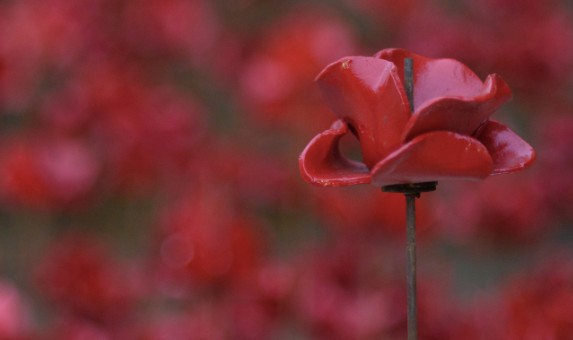 The traditional red poppy was a familiar sight on the battlegrounds of the Western Front during the First World War, where it flourished amidst the devastation of trench warfare. It was adopted as a symbol of remembrance in the wake of a poem entitled ‘In Flanders Fields’ by Canadian soldier John McCrae, which concludes with a demand that the dead be remembered by those at home:
The traditional red poppy was a familiar sight on the battlegrounds of the Western Front during the First World War, where it flourished amidst the devastation of trench warfare. It was adopted as a symbol of remembrance in the wake of a poem entitled ‘In Flanders Fields’ by Canadian soldier John McCrae, which concludes with a demand that the dead be remembered by those at home:
“If ye break faith with us who die
We shall not sleep, though poppies grow
In Flanders fields.”
At the end of the war, as memorials to the dead sprang up in cities, towns and villages across the country, the poppy became a popular symbol of the public’s commitment to remembering those who had perished in wartime. Artificial replicas of the flower—to be worn through a buttonhole on Armistice Day—were first sold in Britain to raise money for ex-servicemen in 1921, a practice that continues to this day.
Useful Information
If you would like to read up about the Poppies, why we wear poppies or about the history of the Poppies – take a look at the links below.
- Learning Resources available – FREE including our educational pack
- 14-18 NOW
- Why we wear poppies on Remembrance Day:
- Saunders, N J. The Poppy: A History of Conflict, Loss, Remembrance, and Redemption. Oneworld Publications, 2013.


